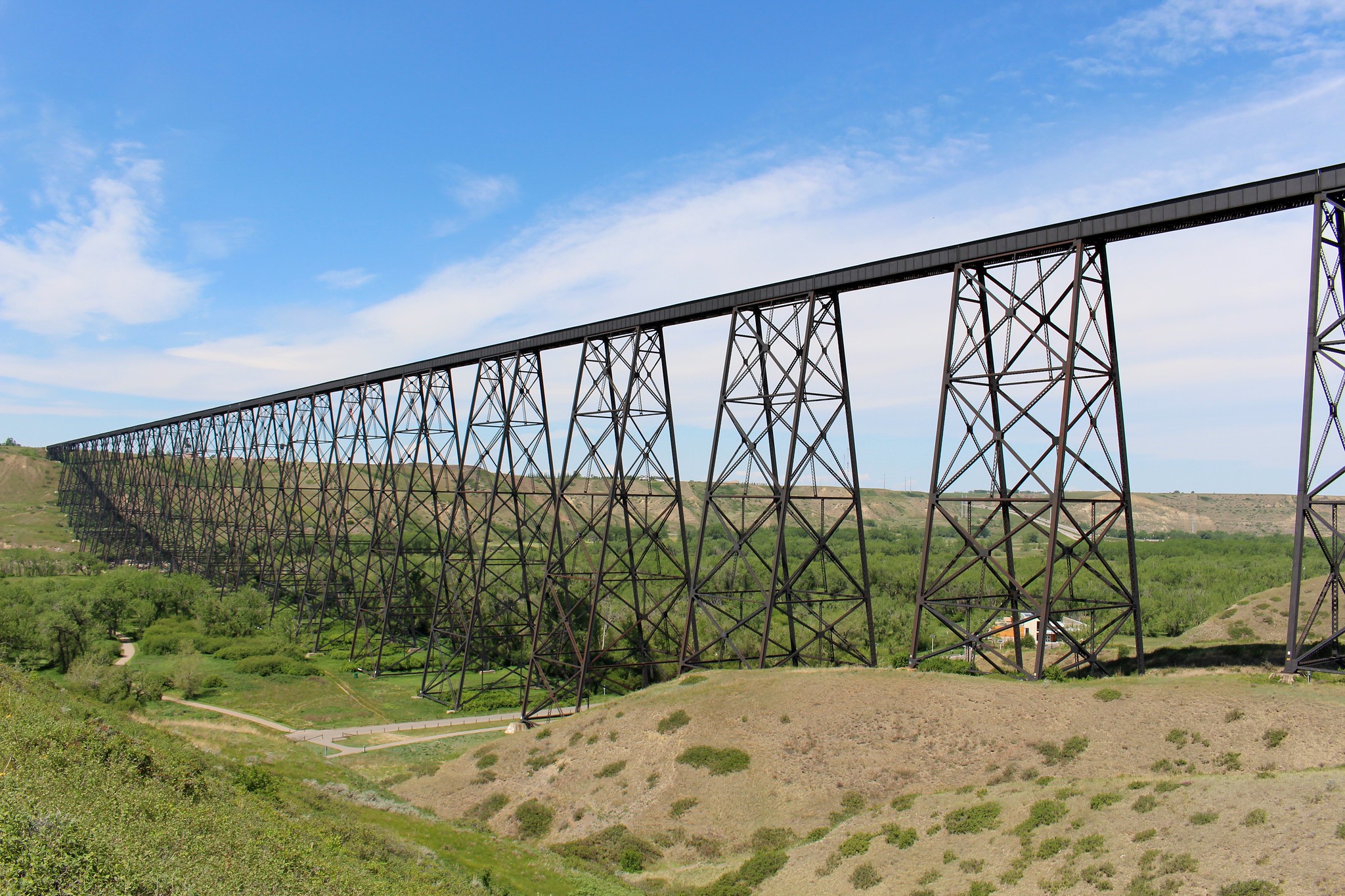By George Rose – Calgary, Alta.
Six months after joining the Canadian Pacific Railway (CPR) at Medicine Hat as a wiper cleaning train engines, I was a student fireman travelling from there to Swift Current, Sask.
I took a few trips and was taught to shovel coal on the coal burner and how to control the coal on the stoker. It was a complicated maneuver.
Promoted to fireman, I was sent to the Crowsnest subdivision and what used to be the CPR’s second transcontinental crossing of the Rocky Mountains. My trip went west out of Lethbridge to Crowsnest and back. This meant I had to travel a long train bridge twice with each trip.
The bridge, constructed between 1906 and 1909, crosses a huge coulee and is still the largest bridge of its kind in the world.
Breathtaking trip across a shaky bridge
The Lethbridge Viaduct was the main feature of a line relocation across the Oldman River. It measures over a mile long, 5,327.6-feet, and is 307-feet above the river. It cost $1.35 million to construct. At the time it seemed to be a good bargain, as repairs to the old line were estimated at $1 million.

On my first trip, I looked out and down and saw the train swaying so much, I never looked out again during the 20 times I had to cross that bridge.
Over 100 years after its construction, CPR train crews still have to cross that scary bridge. When the rail line was washed out at Coquihalla in 1959, CPR terminated passenger service called “The Crow”. CPR passengers today do not have to endure the breathtaking trip across that shaky bridge.
Despite the tons of coal I shovelled for the steam engines that picked up cars of grain, cattle, and coal in that area, I spent over 10 happy years in Empress before I was sent back to work out of Medicine Hat.
One winter in the late 1950s, I was fireman on an engine that went to Dunmore, six miles east of Medicine Hat, where we switched trains to go to Lethbridge.
A message in Dunmore told of a huge snowstorm coming. When the engineer and the conductor requested permission to return to Medicine Hat, the dispatcher refused. So, off to Lethbridge we went.
That dreadful storm hit
Just nine miles out, the dreadful storm hit. Within a few miles, the train was stuck. The engine was unhooked from the cars. The crew on the engine headed southwest for Bow Island. They left the conductor and the tail end brakeman behind in the train caboose. It was impossible for them to get to the engine through the high drifts.
The visibility was dreadful. Finally the engineer detected a faint light and discovered it was the Bow Island station. From there, we slowly advanced to the water tank and coal chute where we filled up with both.
The whole crew worked to uncover the switch to allow the engine to back down to the CPR bunkhouse. We were snowed in for more than two days.
Snow ploughs eventually came from Lethbridge to dig out the big drifts and get the cars rolling again. We pulled up to Bow Island, where we hooked on our engine and went on to Lethbridge – three days late.



